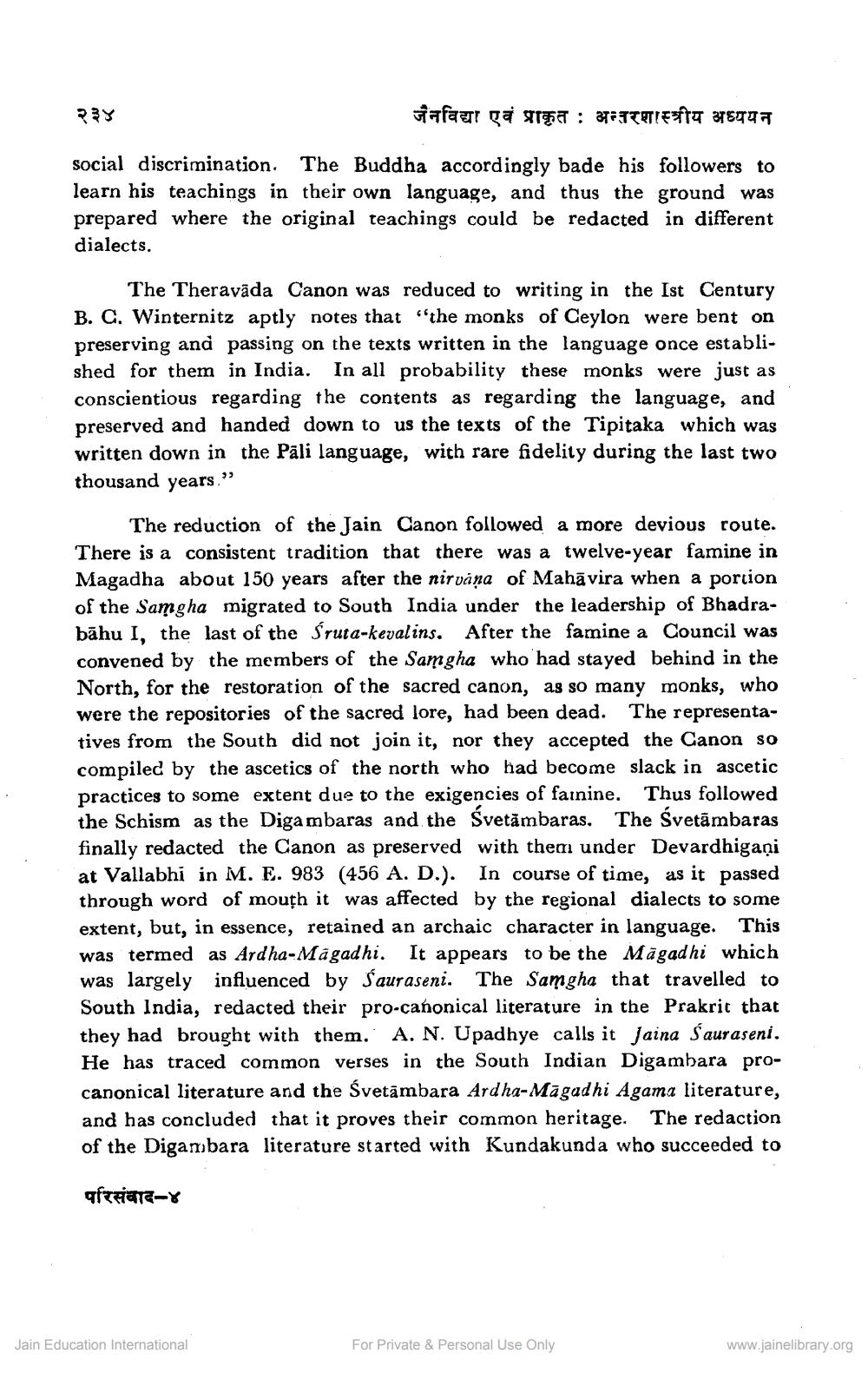Book Title: Prakrit A Review Author(s): Shashi Kant Publisher: Z_Jain_Vidya_evam_Prakrit_014026_HR.pdf View full book textPage 6
________________ २३४ जैनविद्या एवं प्राकृत : अन्तरशास्त्रीय अध्ययन social discrimination. The Buddha accordingly bade his followers to learn his teachings in their own language, and thus the ground was prepared where the original teachings could be redacted in different dialects. The Theravāda Canon was reduced to writing in the Ist Century B. C. Winternitz aptly notes that the monks of Ceylon were bent on preserving and passing on the texts written in the language once established for them in India. In all probability these monks were just as conscientious regarding the contents as regarding the language, and preserved and handed down to us the texts of the Tipitaka which was written down in the Pāli language, with rare fidelity during the last two thousand years." The reduction of the Jain Canon followed a more devious route. There is a consistent tradition that there was a twelve-year famine in Magadha about 150 years after the nirvana of Mahāvira when a portion of the Samgha migrated to South India under the leadership of Bhadrabāhu I, the last of the Sruta-kevalins. After the famine a Council was convened by the members of the Samgha who had stayed behind in the North, for the restoration of the sacred canon, as so many monks, who were the repositories of the sacred lore, had been dead. The representatives from the South did not join it, nor they accepted the Canon so compiled by the ascetics of the north who had become slack in ascetic practices to some extent due to the exigencies of fainine. Thus followed the Schism as the Diga mbaras and the Svetāmbaras, The Svetämbaras finally redacted the Canon as preserved with them under Devardhigaại at Vallabhi in M. E. 983 (456 A. D.). In course of time, as it passed through word of mouth it was affected by the regional dialects to some extent, but, in essence, retained an archaic character in language. This was termed as Ardha-Magadhi. It appears to be the Māgadhi which was largely influenced by Sauraseni. The Samgha that travelled to South India, redacted their pro-canonical literature in the Prakrit that they had brought with them. A. N. Upadhye calls it aina sauraseni. He has traced common verses in the South Indian Digambara procanonical literature and the Svetāmbara Ardha-Magadhi Agama literature, and has concluded that it proves their common heritage. The redaction of the Diganbara literature started with Kundakunda who succeeded to परिसंवाद-४ Jain Education International For Private & Personal Use Only www.jainelibrary.orgPage Navigation
1 ... 4 5 6 7
